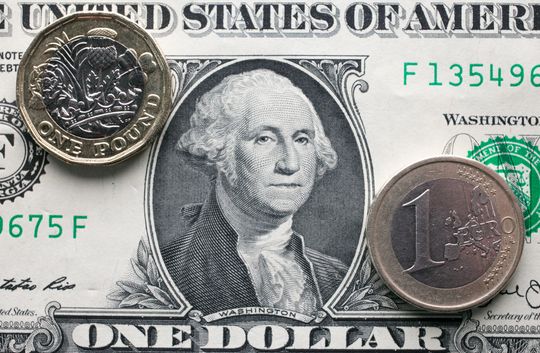Fed easing could weaken the U.S. dollar, which favors non-U.S. markets and dollar-based investors
Investing in the S&P 500 Index SPX, -1.44% is not the best way to profit from an anticipated Fed pivot. Not because U.S. equities won’t rally when the Federal Reserve decides to reduce the pace of its rate hikes. They probably will.
But another category of stocks is quite likely to be an even better performer for a U.S. dollar-based investor.
I’m referring to international equities. It’s a good bet that the U.S. dollar’s strength against other currencies will weaken after a Fed pivot, and if that happens, an investment in non-U.S. stocks will earn a double return — both from the stocks themselves and from the appreciation of those stocks’ local currencies vis-à-vis the dollar.
The past couple of months provide a powerful illustration of this double-return potential. Since its high on Sep. 28, the U.S. Dollar Index DXY, 0.01% has fallen 8.3% through Dec. 5. Over this 2+ month period, MSCI’s ACWI-ex-U.S. Index (reflecting the return of an index of non-U.S. stocks) has beaten the S&P 500 by 6.4 percentage points — 14.2% versus 7.8%. (These returns compare the iShares MSCI ACWI ex-U.S. ETF ACWX, -0.41% and the SPDR S&P 500 ETF SPY, -1.44%. )
As you can see, the dollar’s decline accounts for almost all of the MSCI ETF’s outperformance.
To be sure, the fate of the dollar on foreign exchange markets depends on more than when the Fed decides to pivot. It also depends on what the central banks of the United States’ major trading partners will be doing at the same time. Nevertheless, it is a decent bet that the Fed will pivot well before those other central banks will.
That’s because, even though the Fed was late to the game in recognizing inflation’s persistence, European central banks, for example, were even later. Partially as a result, eurozone inflation is markedly higher than U.S. inflation — 10.0% versus 7.5% over the past 12 months.
Given the lower U.S. inflation rate, you’d expect the U.S. 10-year government bond yield TMUBMUSD10Y, 3.548% to also be lower than the comparable eurozone government bond. But it isn’t: The U.S. 10-year yield currently is significantly higher: 3.7% versus 2.8%.
These differences suggest the Fed has the room to start easing well before Europe. We saw early indications of this when, even as Fed Chairman Jerome Powell was announcing that the Fed was prepared to slow the pace of its rate hikes, European Central Bank President Christine Lagarde insisted that more rate hikes are in order.
To the extent you’re confident that the dollar’s foreign exchange value has much further to decline, you would want to shift your equity portfolio’s asset allocation away from U.S. stocks towards non-U.S. stocks. Even if you’re merely agnostic about the fate of the dollar, you’d want to have your equity portfolio split more or less evenly between U.S. and non-U.S. stocks. Concentrate your portfolio in U.S.-based companies only if you believe that the dollar’s foreign exchange value will continue rising even more than it already has in recent years.

